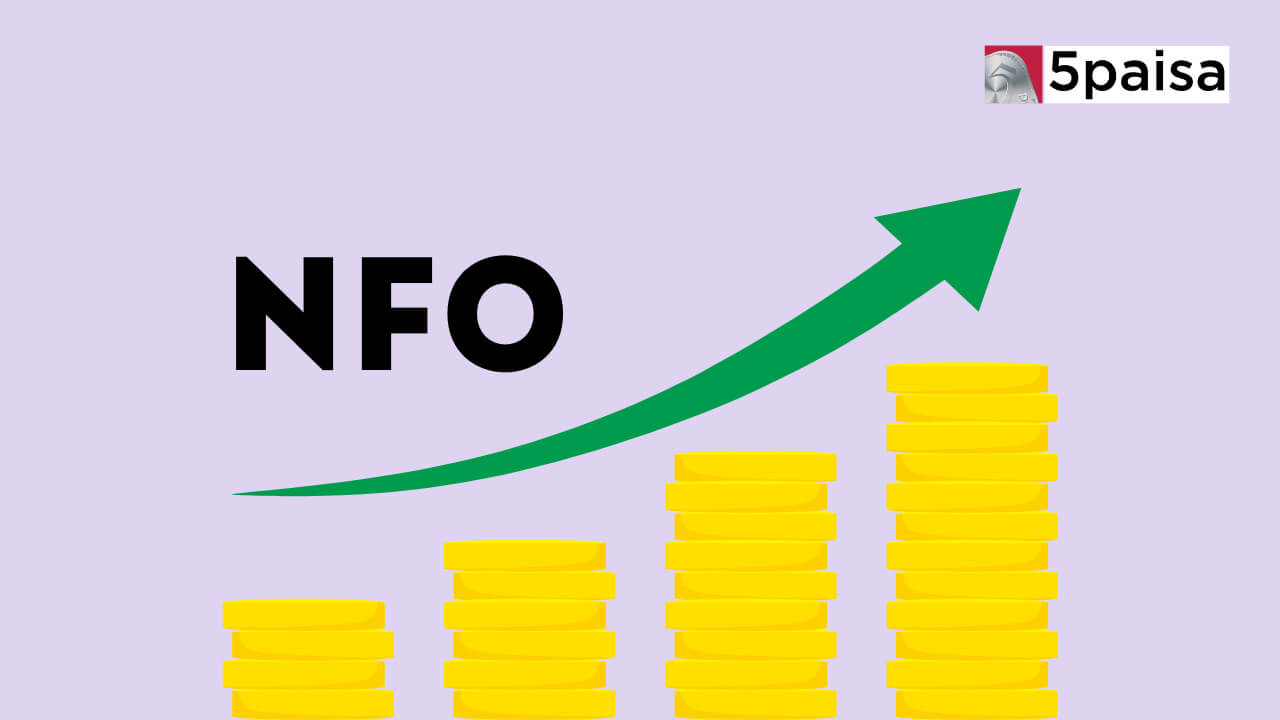List of Best Silver ETF to Invest
How Many Mutual Funds Should I Invest in?

Introduction
To increase their wealth, investors are increasingly turning to mutual funds. However, choosing how many mutual funds to invest in can take time and effort, given the market's abundance of mutual funds. While diversity is crucial, purchasing an excessive number of mutual funds can make your portfolio challenging to manage and possibly lower your returns. Conversely, putting too little money into a portfolio can subject investors to unnecessary risk. This article will examine how many mutual funds should you invest in to build a well-balanced portfolio and increase returns.
What are Mutual Funds?
"MF" refers to a specific kind of investment vehicle that combines funds from numerous participants and invests in various products, including stocks, bonds, and commodities. Shares of the entire portfolio, which a qualified fund manager oversees, are owned by each investor. Mutual funds' main goal is to expose investors to various asset classes and diversification without requiring them to select specific stocks. Depending on how well the underlying assets perform, investors may receive returns in the form of capital gains, dividends, or interest income in exchange for their investment, for investors looking for potentially more significant returns than typical savings accounts or CDs, mutual funds (MFs) are a popular choice.
How Many Mutual Funds Should I Own?
How many mutual funds should I invest in, is a common question that arises when individuals are creating an investment portfolio.You shouldn't possess a certain quantity of mutual funds because it greatly depends on your personal investment objectives, risk tolerance, and requirement for portfolio diversity. However, having an excessive number of mutual funds might result in over-diversification, which can harm the performance of your portfolio. On the other hand, having too few mutual funds can limit your returns and increase the risk of concentration. Aim for a diverse portfolio of 10 to 15 mutual funds, with various asset classes and investing techniques, as a general rule of thumb. To ensure that your portfolio is in line with your investment objectives and risk tolerance, it's also crucial to examine and rebalance how many mutual funds I should have in my portfolio.
Types of Mutual Funds
Large-cap Equity Mutual Funds
Mutual funds, known as large-cap equity, invest in companies with significant market capitalizations, typically those with market capitalizations over $10 billion. These funds concentrate on investing in well-established businesses regarded as industry leaders. Since they are less vulnerable to market volatility than mid or small-cap funds, large-cap equity mutual funds are typically considered less risky. These funds invest in blue-chip companies with solid fundamentals and consistent earnings to provide long-term capital appreciation. Large-cap equity mutual funds are popular for investors looking for steady and consistent returns with relatively low risk.
Mid-cap Equity Mutual Funds
Mutual funds, known as mid-cap equity, invest in mid-sized companies, often those with market capitalizations between $2 billion and $10 billion. These funds concentrate on investing in businesses with the potential for rapid development and expansion but may not be as well-established as large-cap firms. Because mid-cap equity mutual funds are considered riskier than large-cap funds but less hazardous than small-cap funds, they can provide investors with a balance of growth potential and risk. By investing in businesses with excellent fundamentals, promising development prospects, and competitive advantages within their respective industries, these funds seek to generate long-term capital appreciation.
Small-cap Mutual Funds
Companies with modest market capitalizations, particularly those with market capitalizations of less than $2 billion, are the focus of small-cap mutual funds. These funds concentrate on investing in businesses with significant growth potential but may need to be more well-established or stable than large or mid-cap firms. Although they carry a higher risk, small-cap mutual funds can offer investors significant potential for capital growth. By making investments in businesses with solid fundamentals, cutting-edge goods or services, and a competitive edge within their respective industries, these funds seek to deliver long-term growth.
Debt Mutual Funds
Debt mutual funds are funds that invest in money market instruments, corporate bonds, and other fixed-income assets like government bonds. In comparison to equities funds, these funds are designed to offer investors a lower-risk income stream. Investors who want a steady and predictable return on their investment can consider debt mutual funds. Depending on the issuer's creditworthiness and the maturity of the securities in the portfolio, these funds have variable levels of risk and rewards. Depending on how long the underlying securities will last, debt mutual funds can be divided into several sorts: liquid, short-term, and long-term.
Sectoral Mutual Funds
Sectoral mutual funds are mutual funds that invest in businesses operating in a particular industry or sector, such as the technology, healthcare, or energy industries. These funds concentrate on investing in companies anticipated to gain from the sector's growth potential. Investors can gain exposure to a particular industry or topic through sectoral mutual funds, which have a more significant potential for risk and return than broader-based funds. These funds may be appropriate for investors with an optimistic outlook on a particular sector or business who are prepared to assume greater risk in exchange for the possibility of greater profits. Investors should be aware of the dangers related to sectoral mutual funds, such as volatility and concentration risk.
How Many Mutual Funds Should You Invest in?
Large-cap Equity Mutual Funds
Mutual funds that invest in significant market capitalization, established companies are known as large-cap equity funds. Large-cap funds are a good alternative for people looking for reliable, regular returns with relatively little risk. Investors should strive to build a diversified portfolio of roughly 10 to 15 mutual funds encompassing a range of asset classes and investment techniques.
Mid-cap Equity Mutual Funds
Mid-cap equity mutual funds invest in businesses with medium market capitalizations to balance growth potential and risk. Mid-cap funds are a good alternative for those seeking a portfolio balancing growth potential and risk. Investors should strive to create a diversified portfolio of about 10 to 15 mutual funds comprising a range of asset classes and investment methods.
Small-cap Mutual Funds
Small-cap mutual funds invest in corporations with low market capitalizations and have an excellent potential for capital growth and a higher risk. Aiming for a diverse portfolio of 10 to 15 mutual funds with various asset classes and investing techniques is a good idea for investors. Small-cap funds are a good choice for individuals ready to suffer increased volatility and risk in exchange for more significant profits.
Debt Mutual Funds
Debt mutual funds are mutual funds that invest in fixed-income securities. Compared to equity funds, they carry a relatively lower risk and offer a steady income stream. Depending on their investment goals and risk tolerance, investors should strive to build a diversified portfolio of 3 to 5 debt mutual funds comprising a mix of short- and long-term funds.
Sectoral Mutual Funds
Sectoral mutual funds have the potential for better returns but come with a higher risk owing to concentration because they invest in businesses within a particular area or industry. Investors should establish a diversified portfolio of between 10 to 15 mutual funds containing a variety of asset classes and investing techniques. They should keep their exposure to sectoral mutual funds to at most 10% of their overall portfolio.
Example of Investment & Diversification of Mutual Funds
|
Fund Type |
Investment Amount |
Allocation Percentage |
Expense Ratio |
|
Passively Managed Equity Fund (S&P 500 Index) |
$20,000 |
40% |
0.05% |
|
Passively Managed Equity Fund (Russell 2000 Index) |
$15,000 |
30% |
0.15% |
|
Factor-Based Equity Fund (Invesco QQQ Trust) |
$10,000 |
20% |
0.20% |
|
Actively Managed Equity Fund (Fidelity Contrafund) |
$5,000 |
10% |
0.85% |
In this example, the investor has a total investment amount of $50,000 and has diversified their portfolio across passively managed equity funds that track the S&P 500 and Russell 2000 indices, a factor-based equity fund, and an actively managed equity fund. The passively managed and factor-based equity funds have lower expense ratios, resulting in a lower overall cost than the actively managed equity fund. The allocation percentages have been chosen based on the investor's investment objectives, risk tolerance, and diversification strategy.
Scenario-based Example
Suppose an investor has a total investment amount of Rs. 10 lakhs and wants to invest in a diversified portfolio of mutual funds. Based on their risk tolerance and investment objectives, they decide to allocate their investment amount as follows:
|
Fund Name |
Asset Class |
Allocation Percentage |
Allocation Amount |
|
Baaraa Fund |
Equity |
10% |
Rs. 1 lakh |
|
Bees Fund |
Equity |
20% |
Rs. 2 lakhs |
|
Assi Fund |
Equity |
30% |
Rs. 3 lakhs |
|
Quantum Mutual Funds |
N/A |
40% |
Rs. 4 lakhs |
In this scenario, the investor has allocated their investment amount across four mutual funds, with the majority of the allocation (70%) in equity funds and the remaining 30% in Quantum Mutual Funds. This allocation is based on the investor's risk tolerance and investment objectives, and is designed to provide a diversified portfolio across different asset classes and investment strategies. It's worth noting that this is just an example, and investors should consult with a financial advisor to determine their question in how many mutual funds should I invest.
Conclusion
In conclusion, several variables, such as investing goals, risk tolerance, and desired amount of diversification, affect how many mutual funds an investor owns. While purchasing several mutual funds can increase diversification, avoiding over-diversification and maintaining an eye on long-term objectives is crucial. Investors should also consider the expenses related to each mutual fund and how those expenses can affect their long-term results. Investors can decide in how many mutual funds should I invest, by carefully assessing their unique circumstances and aspirations.
- 0% Commission*
- Upcoming NFOs
- 4000+ Schemes
- Start SIP with Ease
Trending on 5paisa
02
 5paisa Research Team
5paisa Research Team
Mutual Funds and ETFs Related Articles
Disclaimer: Investment in securities market are subject to market risks, read all the related documents carefully before investing. For detailed disclaimer please Click here.





